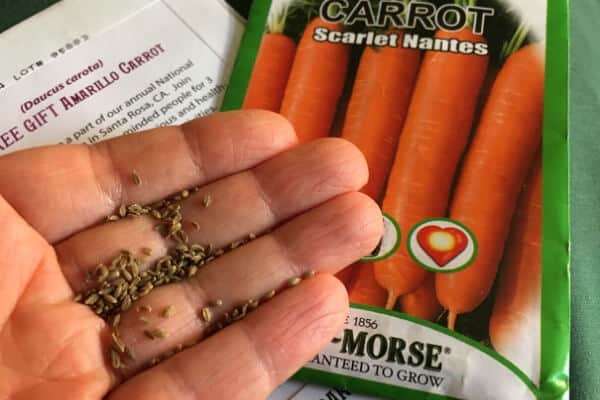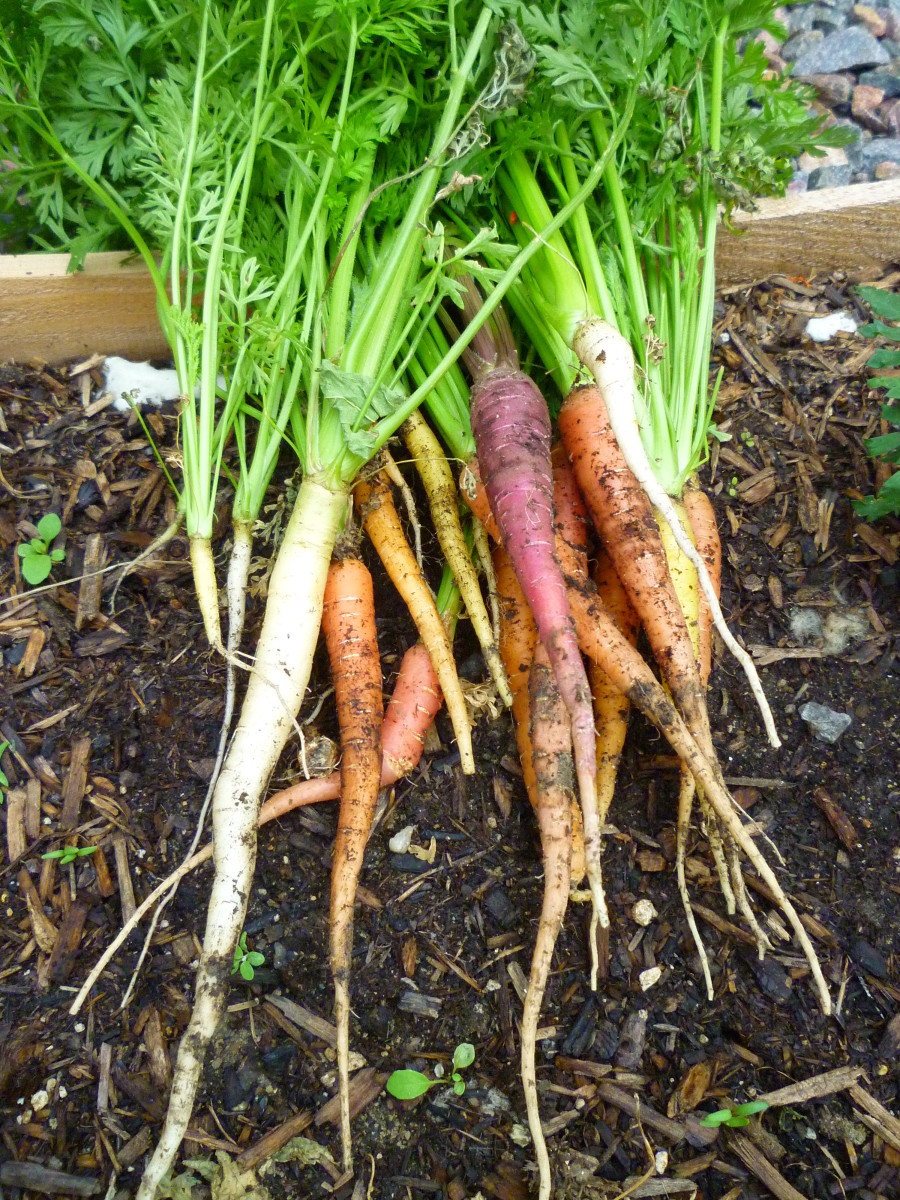The Basics of Carrot Seed Production
Carrots are a popular root vegetable that can be grown for both food and seed production. While many gardeners are familiar with growing carrots for their edible roots, fewer know how to get carrot seeds from carrots. The process of growing carrots for seed production is a bit more complex than growing them for food, but with the right knowledge and techniques, it can be a rewarding experience. To start, it’s essential to understand how carrots produce seeds. Carrots are biennial plants, meaning they complete their life cycle over two growing seasons. In the first season, the plant grows its root and foliage, and in the second season, it produces flowers and seeds. To get carrot seeds from carrots, gardeners need to allow the plants to bolt, or go to seed, which can be encouraged by providing optimal growing conditions and selecting the right variety of carrot.
Choosing the Right Carrot Variety for Seed Production
When it comes to growing carrots for seed production, selecting the right variety is crucial. Not all carrot varieties are suitable for seed harvesting, and some are better suited for this purpose than others. To get carrot seeds from carrots, gardeners should look for varieties that are specifically bred for seed production. These varieties tend to have larger seeds, which are easier to harvest and handle. Some popular carrot varieties for seed harvesting include ‘Danver’s Half-Long’, ‘Little Finger’, and ‘Thumbelina’. These varieties are known for their high seed yields and ease of harvesting. When selecting a carrot variety for seed production, gardeners should also consider factors such as seed size, shape, and color. Larger seeds tend to be easier to handle and store, while smaller seeds may be more prone to damage. The shape and color of the seeds can also affect their viability and storability.
Preparing Your Carrots for Seed Production
Once you have selected the right carrot variety for seed production, it’s time to prepare your carrots for seed harvesting. The first step is to sow the seeds in a well-draining soil with a pH between 6.0 and 6.8. Sow the seeds about ¼ inch deep and ¼ inch apart, and water them gently but thoroughly. As the plants grow, it’s essential to provide them with optimal growing conditions, including full sun, adequate moisture, and fertilization. Carrots are heavy feeders and require a balanced fertilizer to promote healthy growth. A fertilizer with a ratio of 10-10-10 (nitrogen-phosphorus-potassium) is suitable for carrots. Thin the seedlings to about 1-2 inches apart to allow for proper growth and air circulation. Keep the soil consistently moist during the first few weeks after sowing, but avoid overwatering, which can lead to rot and other diseases. As the plants mature, reduce watering to about 1 inch per week. Providing optimal growing conditions is crucial for healthy plant growth and seed production. By following these steps, you can ensure that your carrots are well-prepared for seed production and increase your chances of getting high-quality carrot seeds from carrots.
Identifying the Perfect Time for Seed Harvesting
One of the most critical steps in harvesting carrot seeds is identifying the perfect time to do so. Carrots are ready for seed harvesting when the seed heads have turned brown and the seeds are mature. This typically occurs about 60 to 90 days after the plants have bolted, or gone to seed. To determine if the seeds are ready for harvesting, gently touch the seed heads. If they are dry and brittle, and the seeds are easily dislodged, it’s time to harvest. Another way to check is to look for the appearance of flowers, seed heads, and mature seeds. The flowers will have dropped off, and the seed heads will have turned a light brown color. The seeds themselves will be a dark brown or tan color and will be easily visible. It’s essential to harvest the seeds at the right time, as leaving them on the plant for too long can cause them to become over-mature and lose their viability. By harvesting the seeds at the perfect time, you can ensure that you get high-quality carrot seeds from carrots that will germinate well and produce healthy plants.
The Art of Harvesting Carrot Seeds
Harvesting carrot seeds requires a gentle and careful approach to avoid damaging the seeds. The process involves cutting, drying, and threshing the seed heads. To begin, cut the seed heads from the plants, leaving a small portion of stem attached to the seed head. This will help to prevent the seeds from shattering and make them easier to handle. Next, dry the seed heads further by spreading them out in a warm, dry place. This can be done by tying the seed heads in small bunches and hanging them upside down in a warm, dry location. Once the seed heads are completely dry, it’s time to thresh the seeds. Threshing involves removing the seeds from the seed head, and this can be done by gently rubbing the seed head between your hands or by using a small, handheld threshing tool. Be careful not to apply too much pressure, as this can damage the seeds. After threshing, the seeds will need to be cleaned and dried again to remove any debris or moisture. By following these steps, you can successfully harvest carrot seeds and enjoy the rewards of growing and harvesting your own seeds.
Drying and Storing Carrot Seeds for Future Use
After harvesting carrot seeds, it’s essential to dry them properly to preserve their viability and store them in a cool, dry place. Drying carrot seeds helps to remove excess moisture, which can cause the seeds to rot or become infested with pests. To dry carrot seeds, spread them out in a single layer on a paper bag or a dry cloth. Allow them to air dry for several days, or until they reach a moisture level of around 5-7%. Once the seeds are dry, store them in an airtight container, such as a glass jar or a plastic bag. Make sure the container is clean and dry before adding the seeds. Store the container in a cool, dry place, such as a cupboard or a drawer. The ideal storage conditions for carrot seeds are a temperature of around 40-50°F (4-10°C) and a relative humidity of 50-60%. By following these steps, you can ensure that your carrot seeds remain viable for a long time and can be used for future planting. Proper drying and storage techniques are crucial for maintaining the quality of carrot seeds and ensuring a successful harvest.
Tips and Tricks for Successful Carrot Seed Harvesting
Harvesting carrot seeds can be a rewarding experience, but it requires attention to detail and a few tips and tricks to ensure success. One of the most important things to keep in mind is to handle the seeds gently to avoid damage. Carrot seeds are delicate and can be easily damaged, so it’s essential to handle them with care. Another tip is to harvest the seeds at the right time. If the seeds are harvested too early, they may not be fully mature, and if they are harvested too late, they may be over-mature and less viable. To optimize seed yields, make sure to provide optimal growing conditions for the carrot plants, including full sun, well-draining soil, and adequate moisture. Additionally, consider using a seed starting mix specifically designed for carrot seeds, as this can help to improve germination rates and seedling growth. By following these tips and tricks, you can increase your chances of successful carrot seed harvesting and enjoy the rewards of growing and harvesting your own seeds.
Conclusion: Enjoying the Fruits of Your Labor
Harvesting carrot seeds can be a rewarding experience, and with the right knowledge and techniques, you can enjoy the fruits of your labor. By following the steps outlined in this article, you can successfully grow and harvest your own carrot seeds, and enjoy the many benefits that come with it. Not only will you have a steady supply of fresh, healthy seeds, but you will also be able to save money and reduce your reliance on commercial seed suppliers. Additionally, harvesting your own carrot seeds can be a fun and educational experience, allowing you to connect with nature and appreciate the beauty of the natural world. So why not give it a try? With a little patience and practice, you can become a successful carrot seed harvester and enjoy the many rewards that come with it. By learning how to get carrot seeds from carrots, you can take the first step towards a more sustainable and self-sufficient gardening practice.








